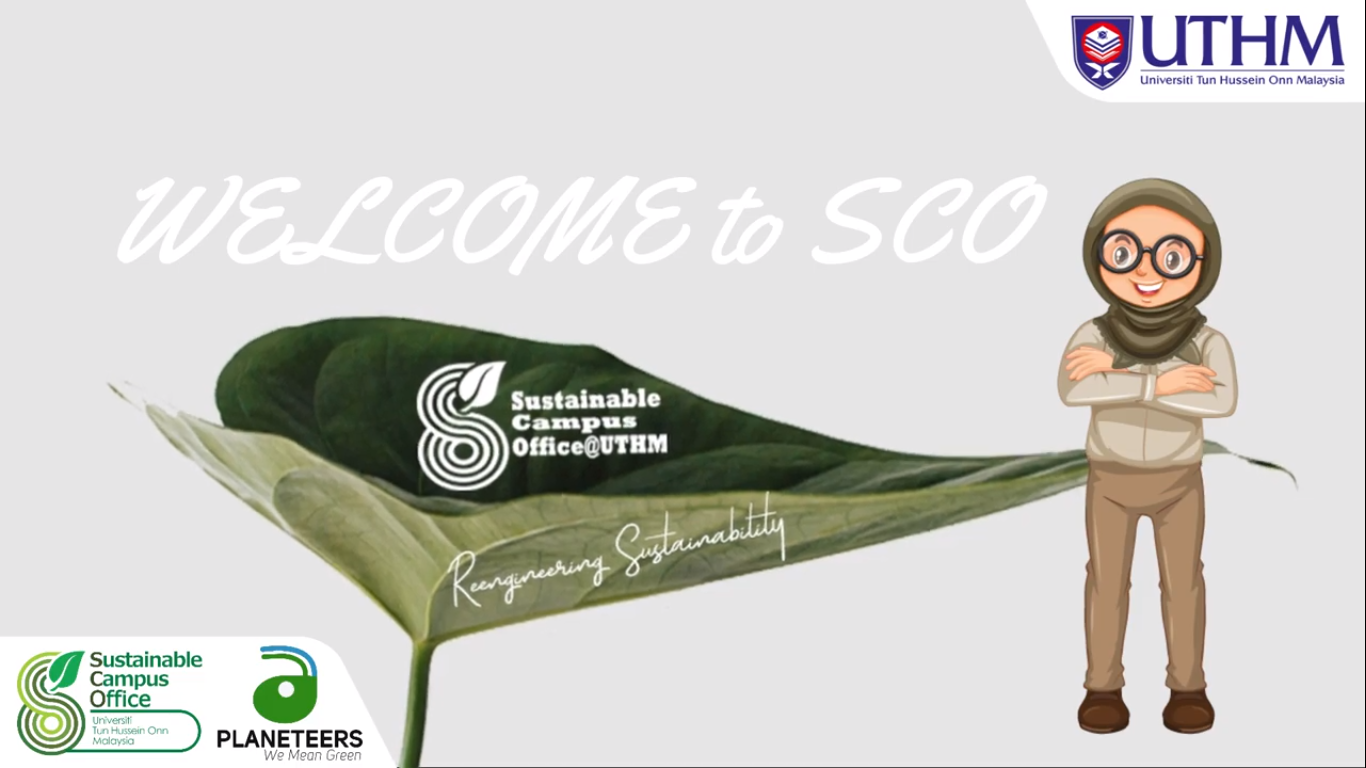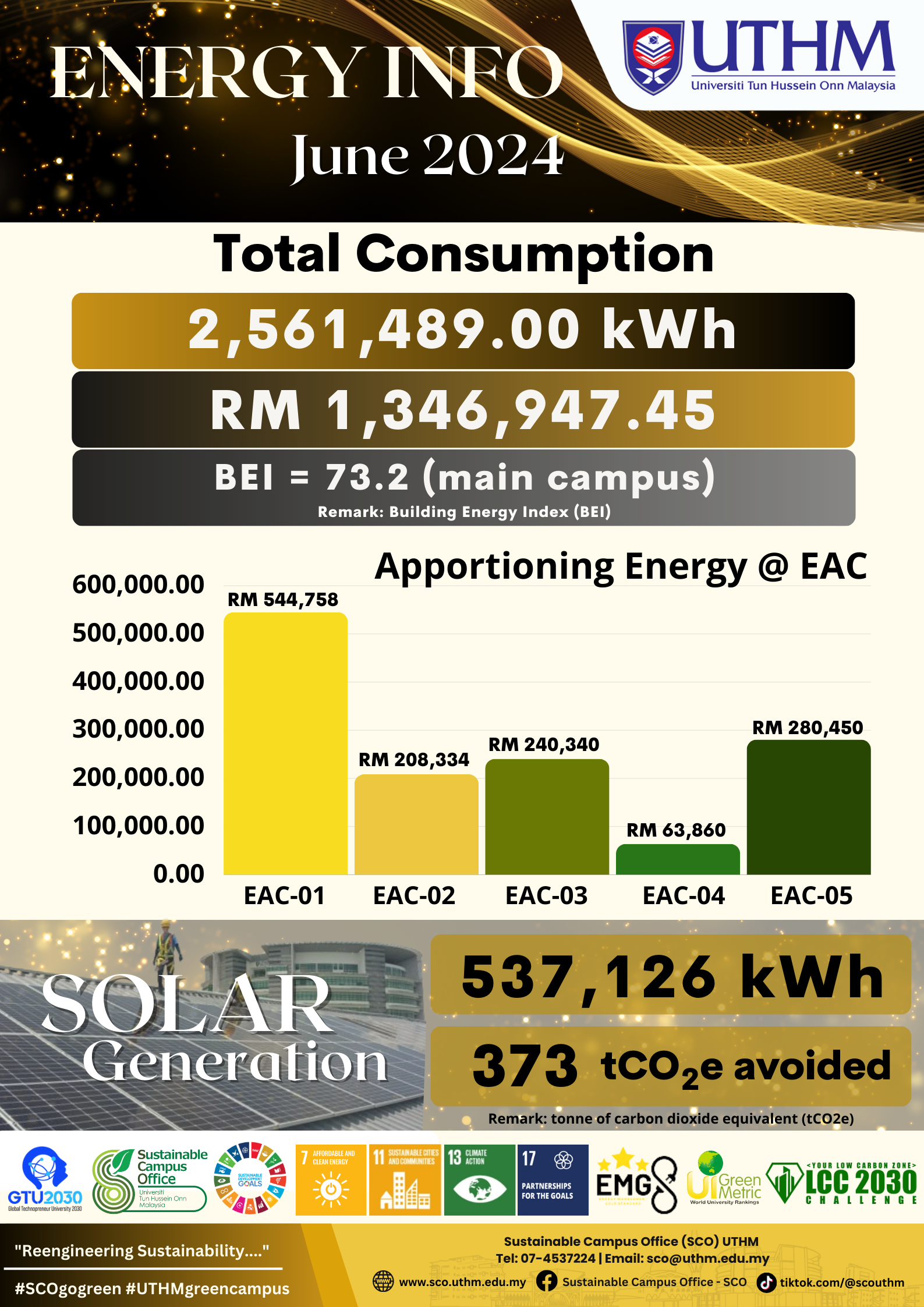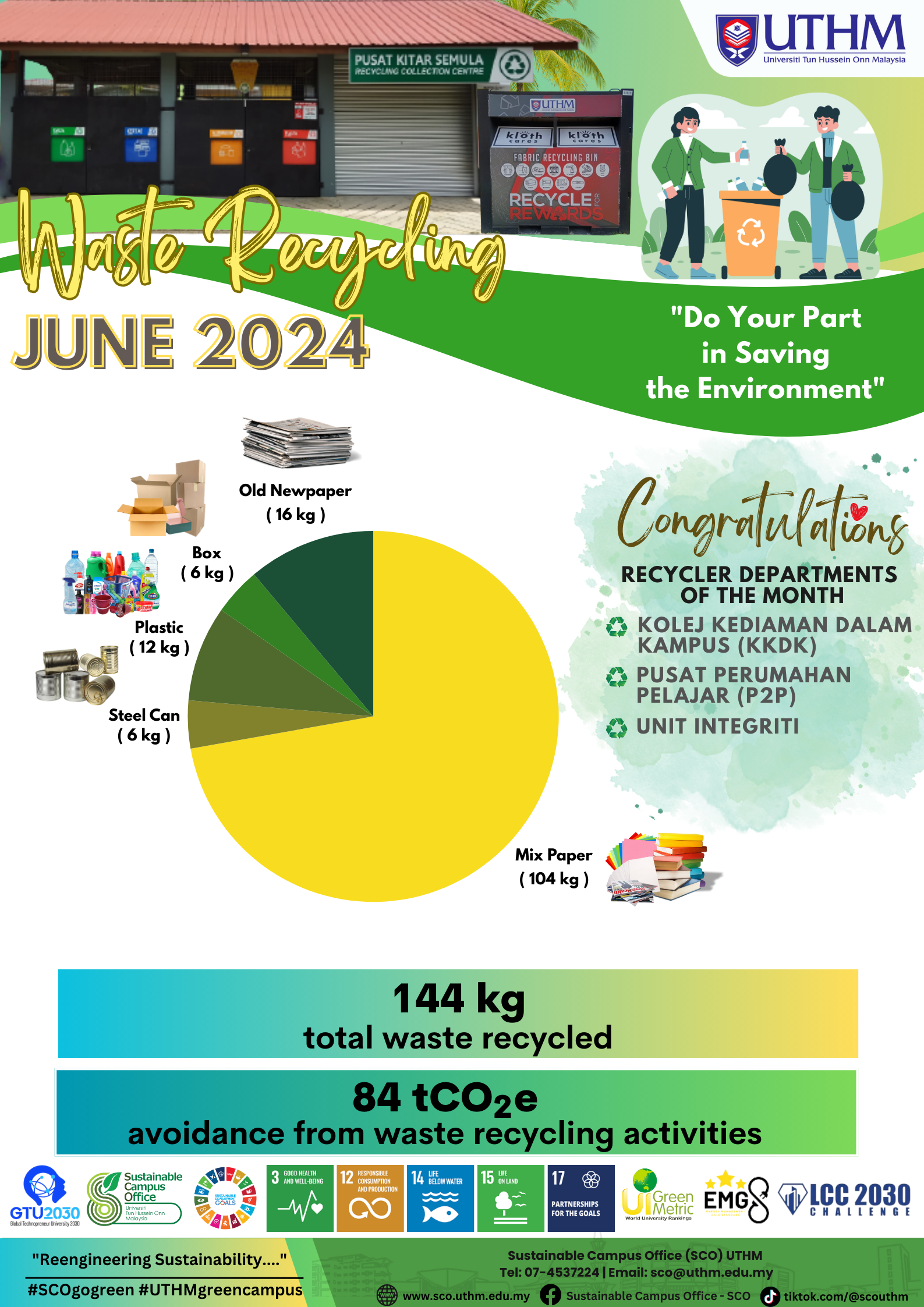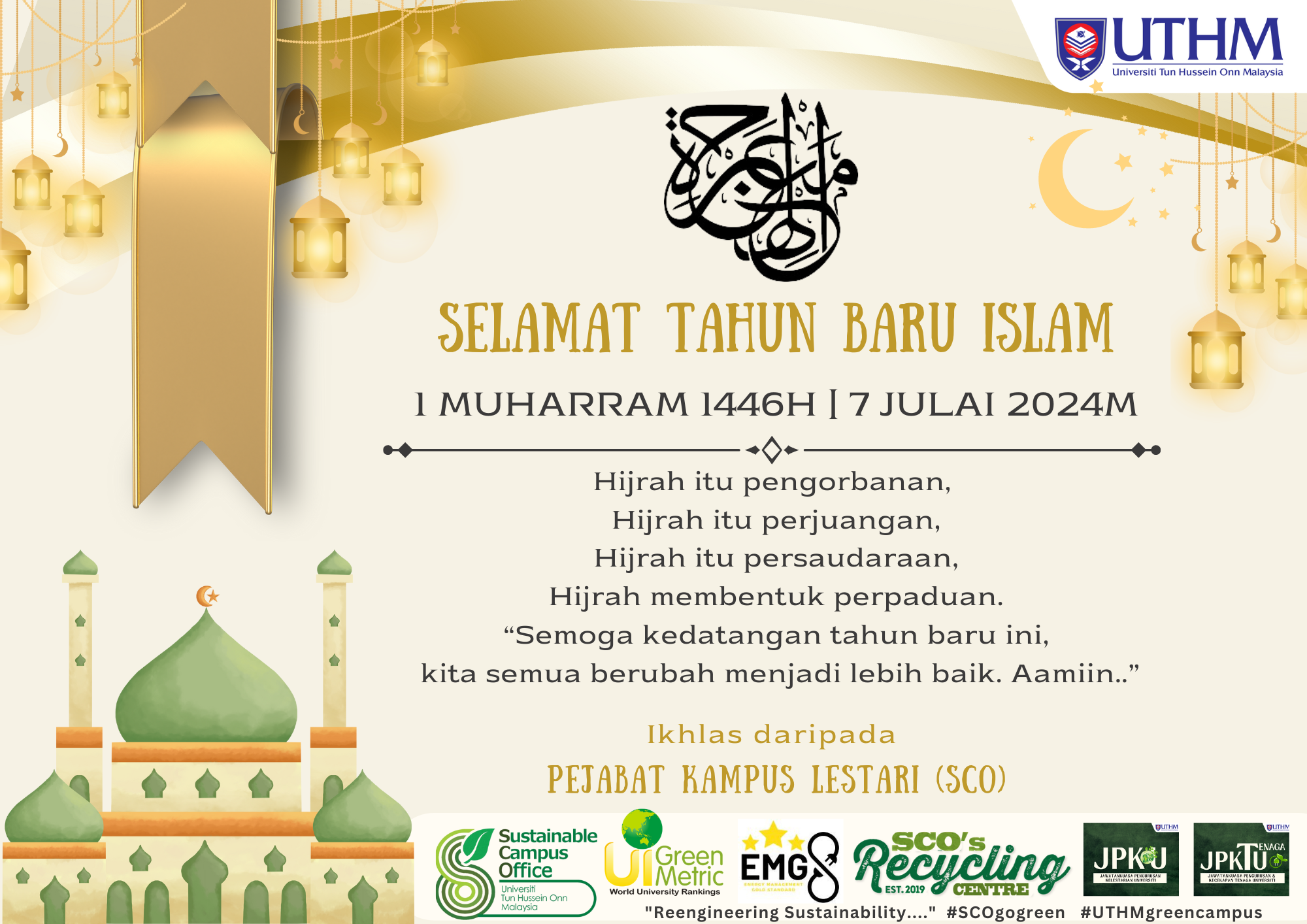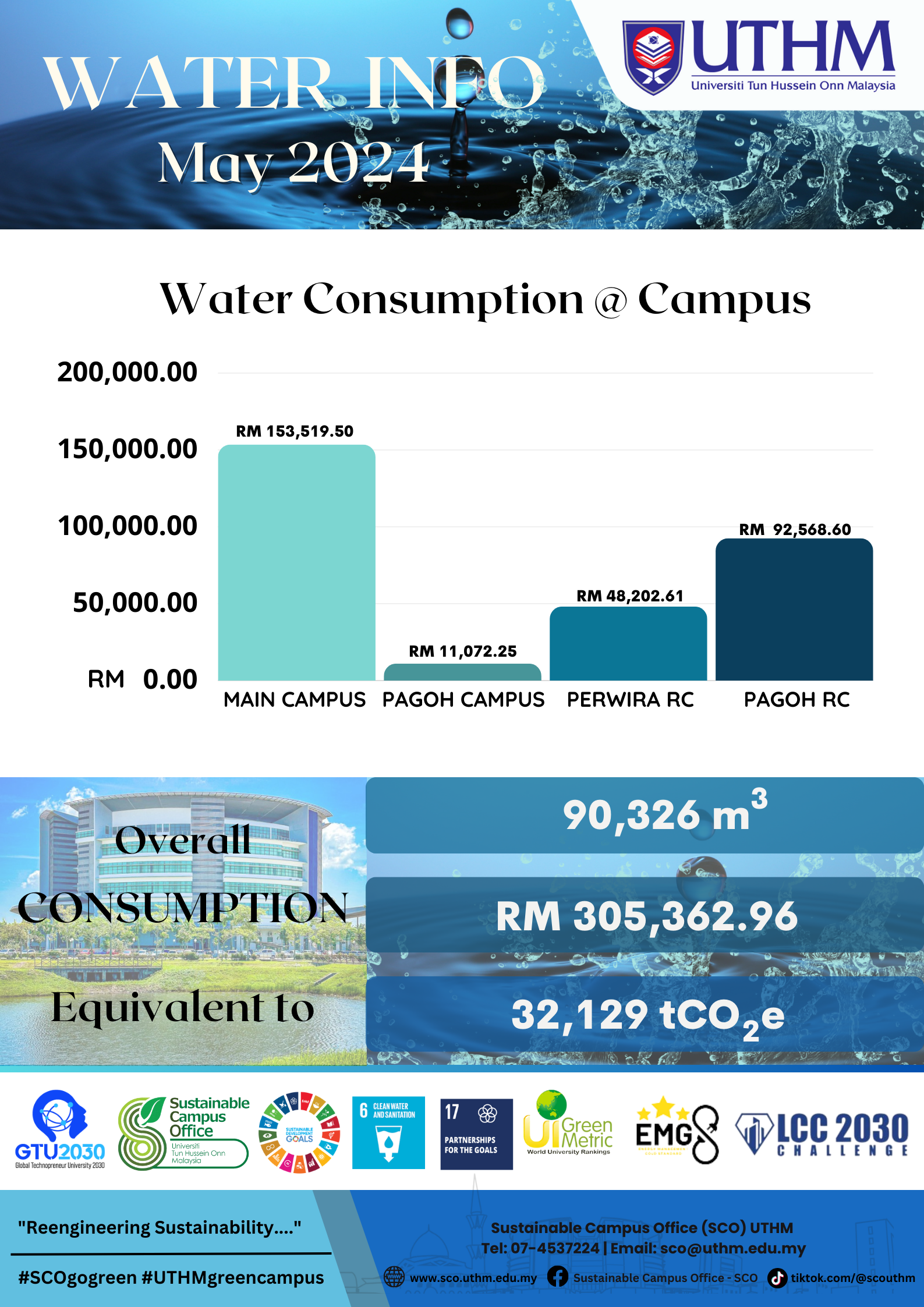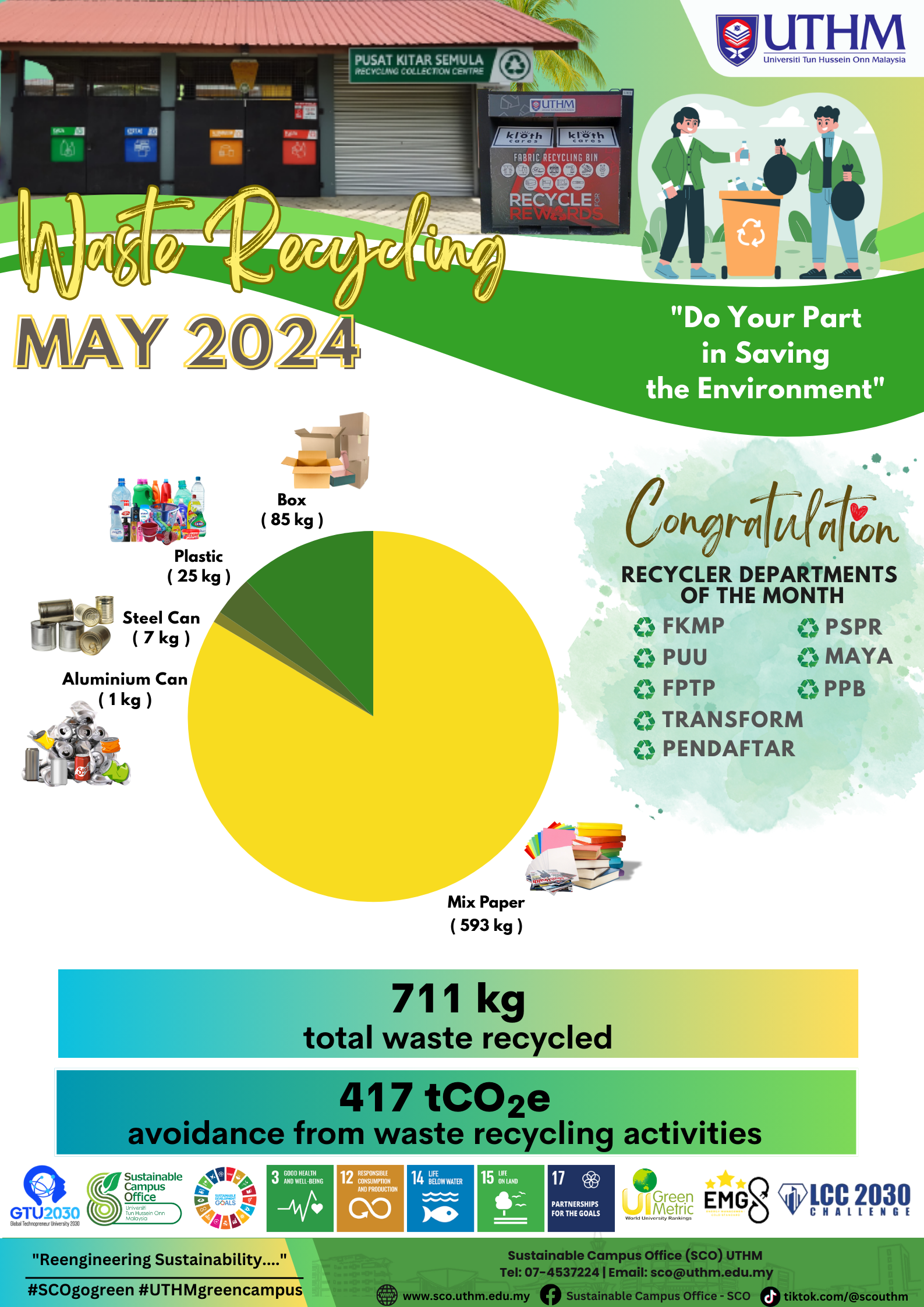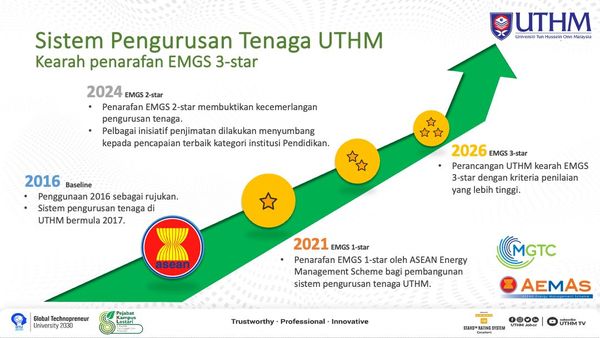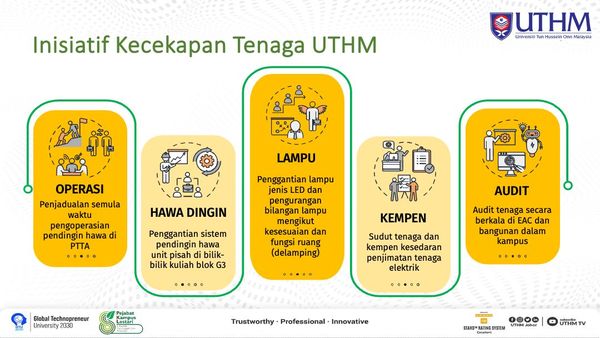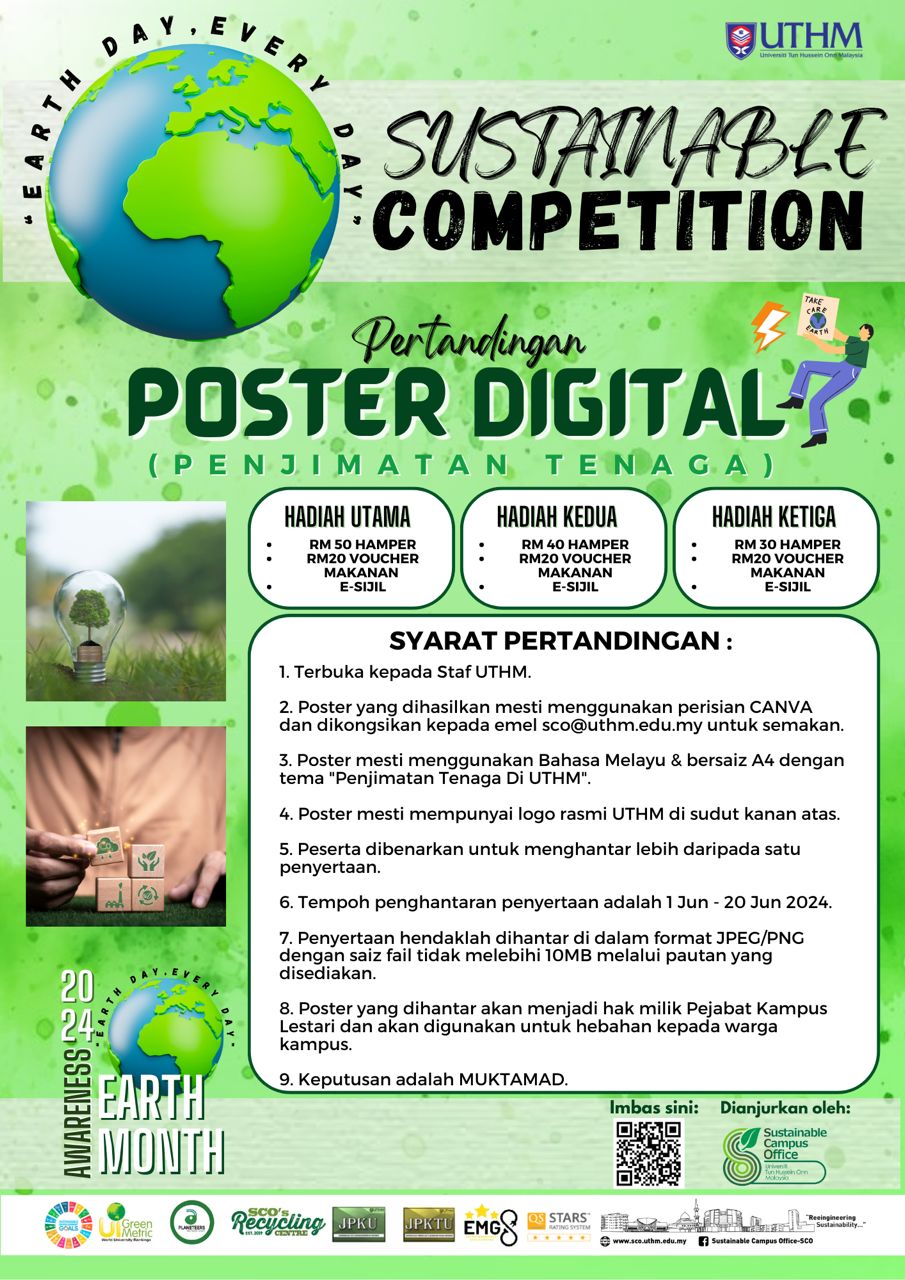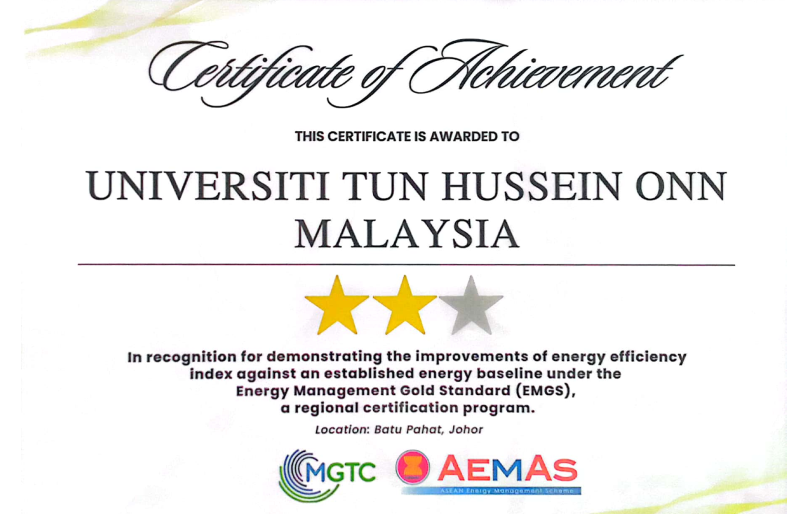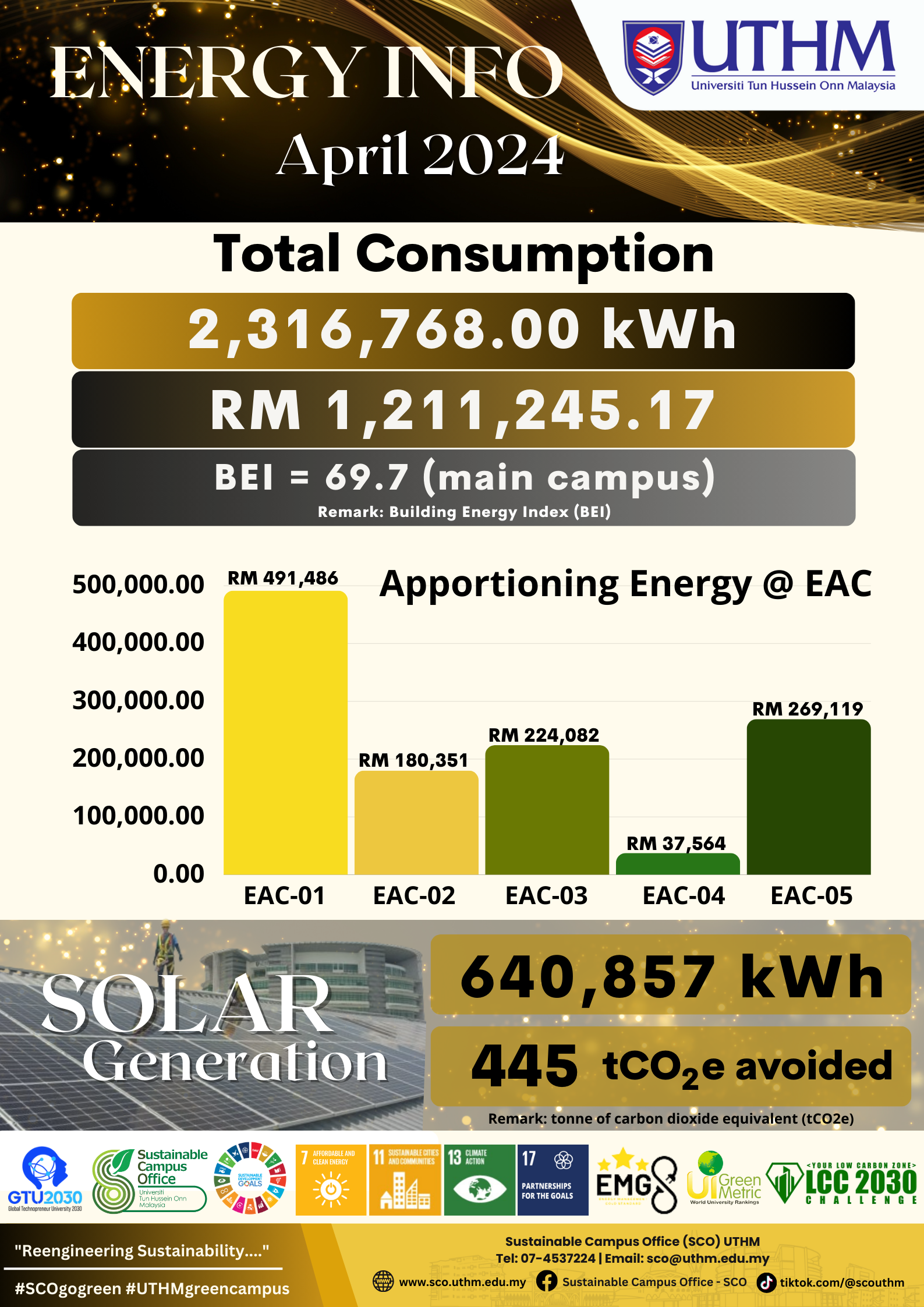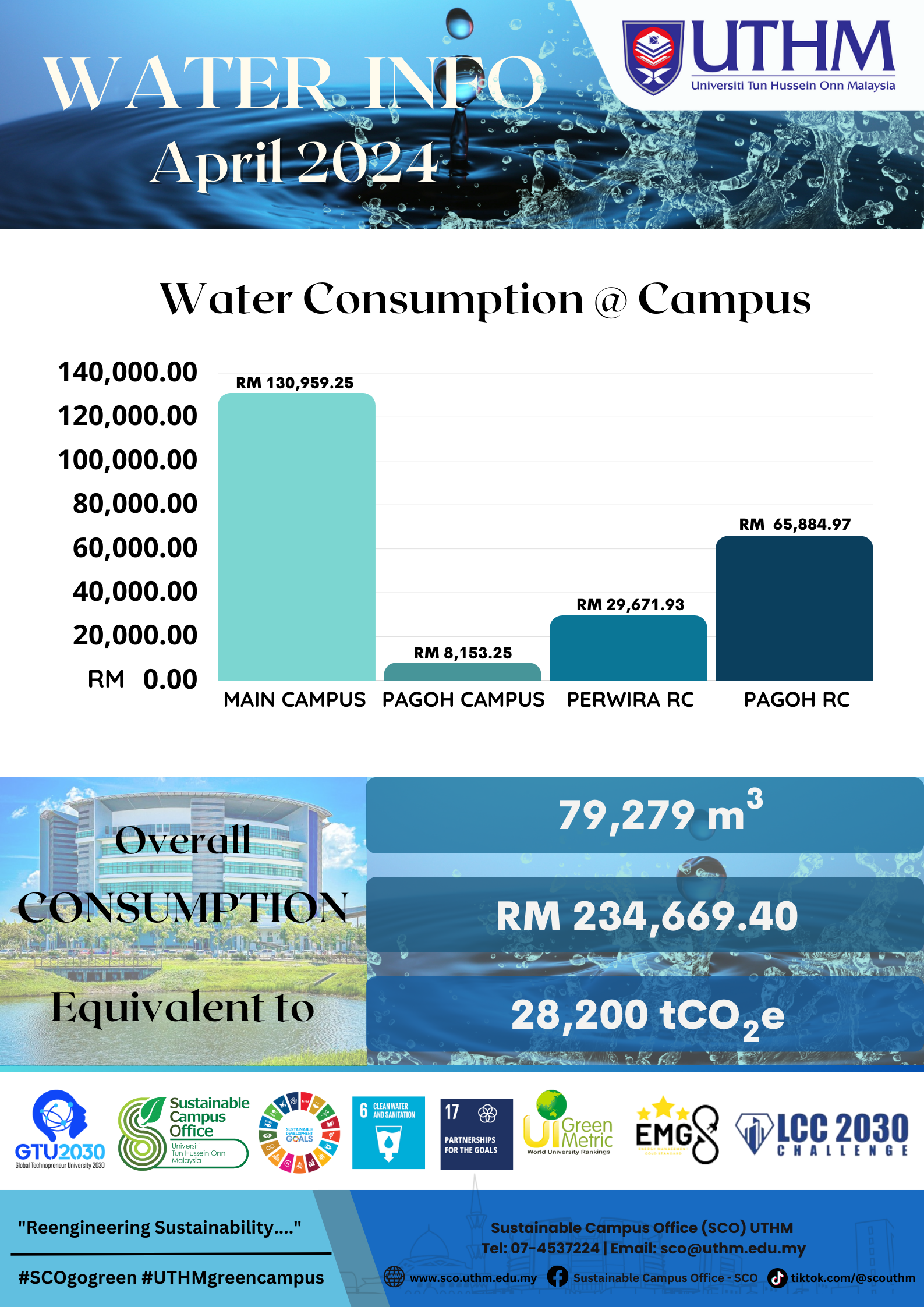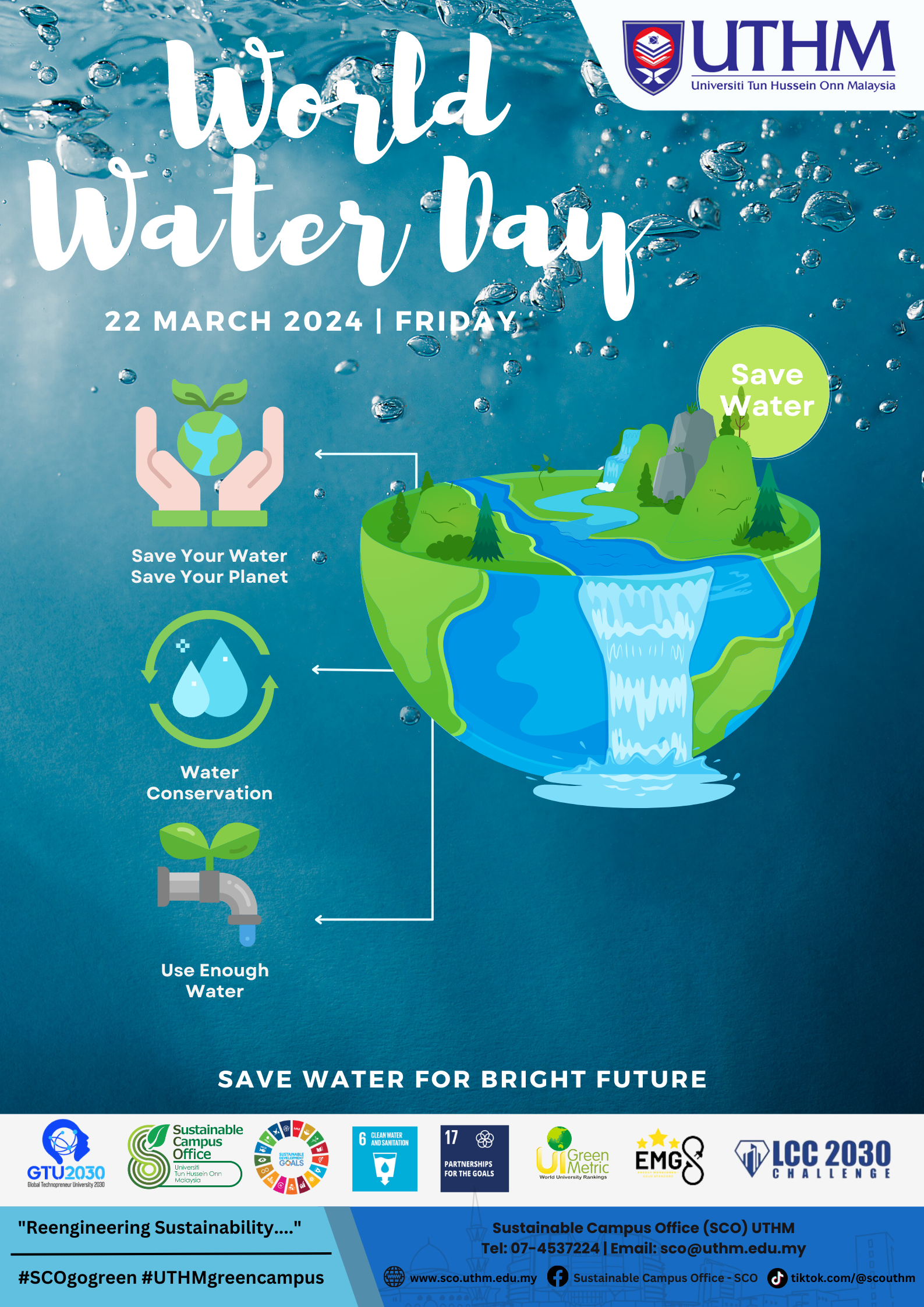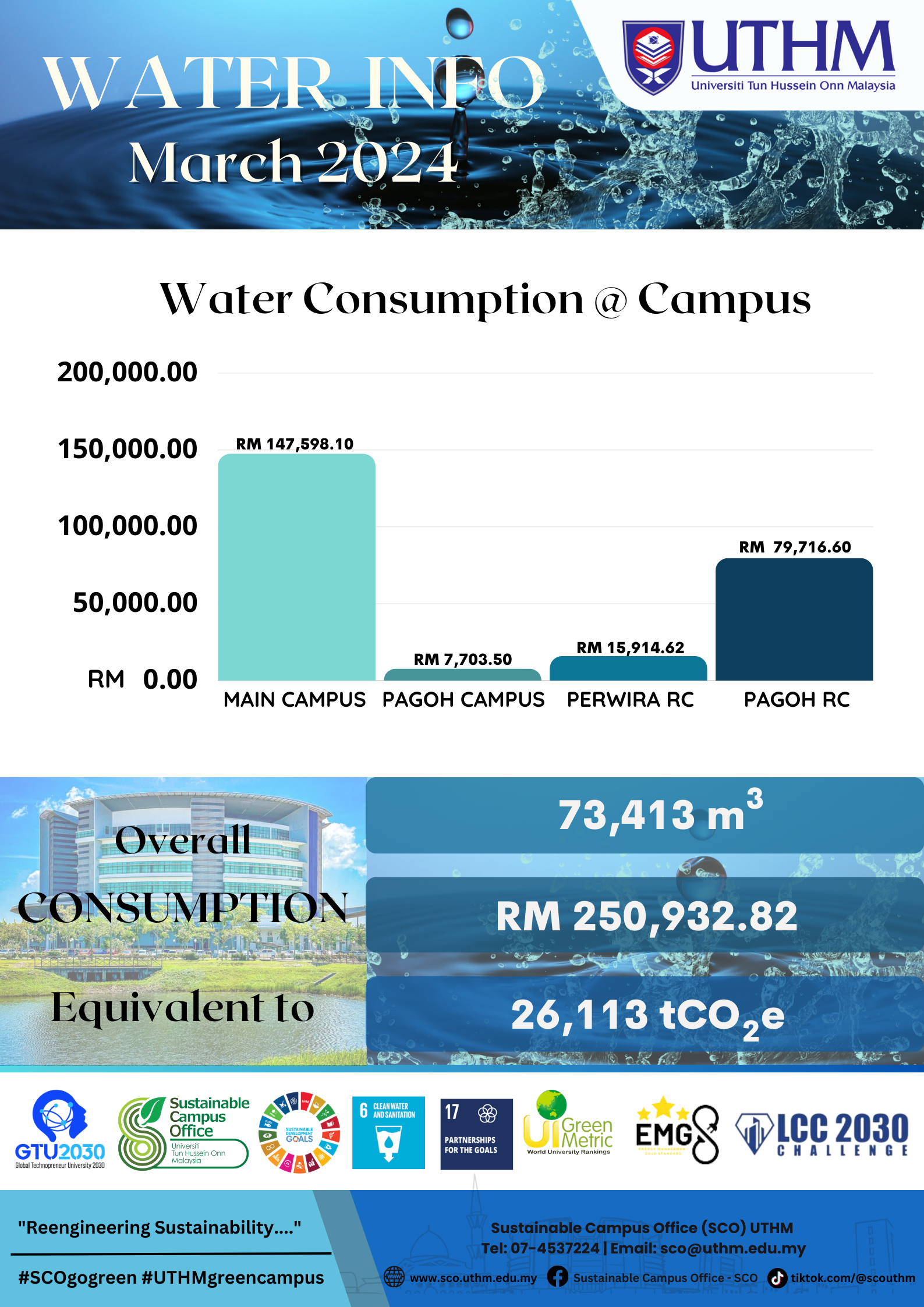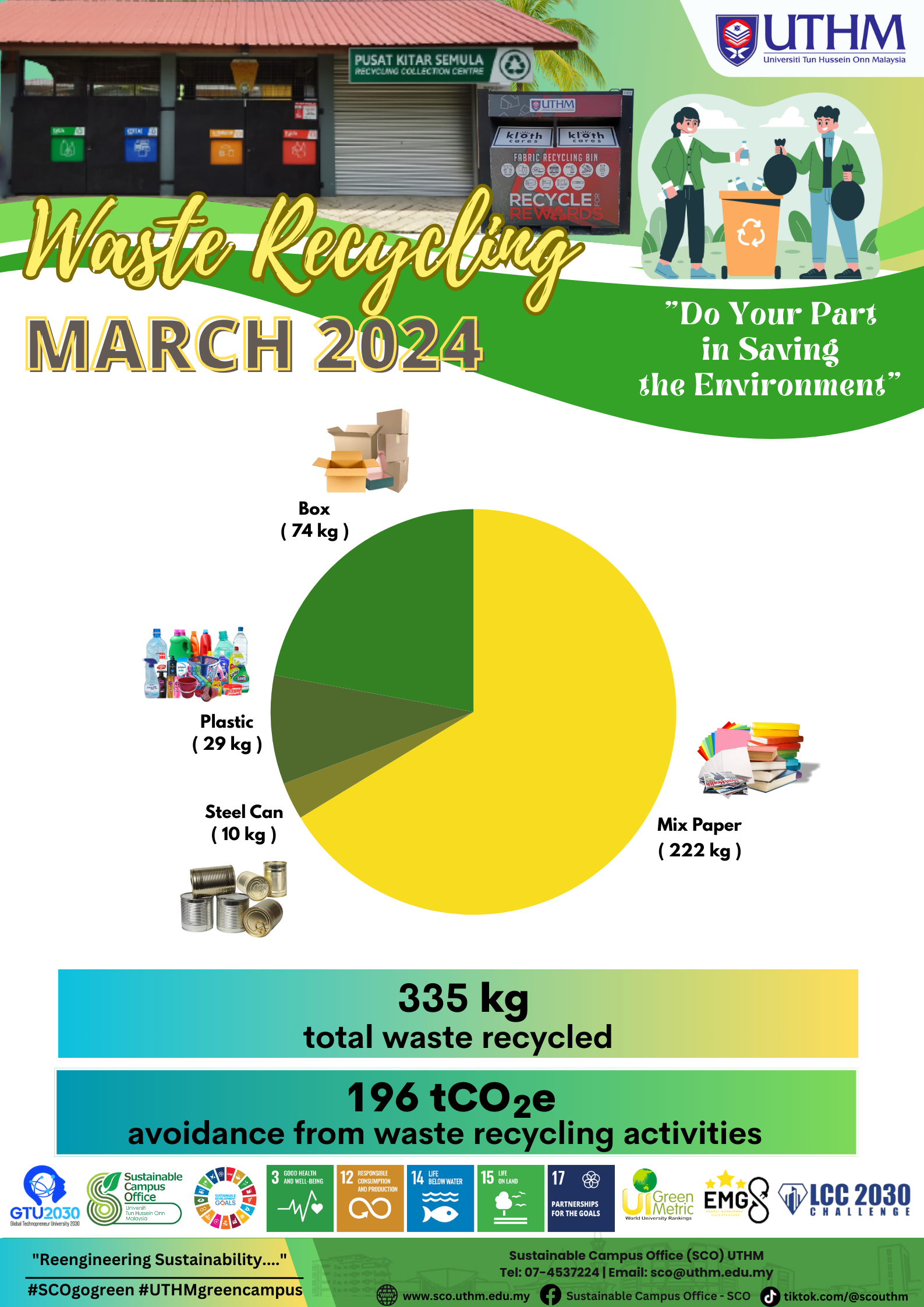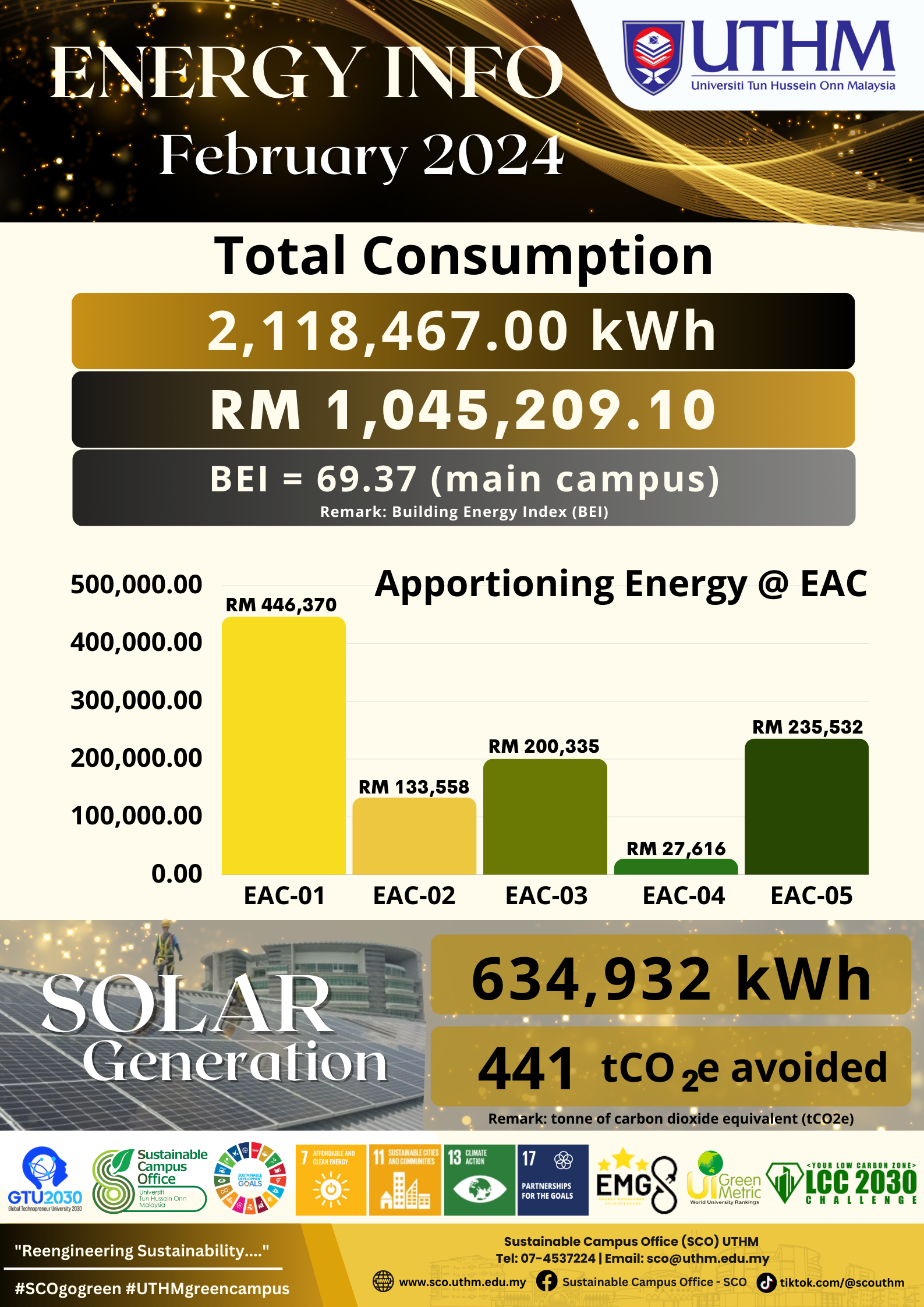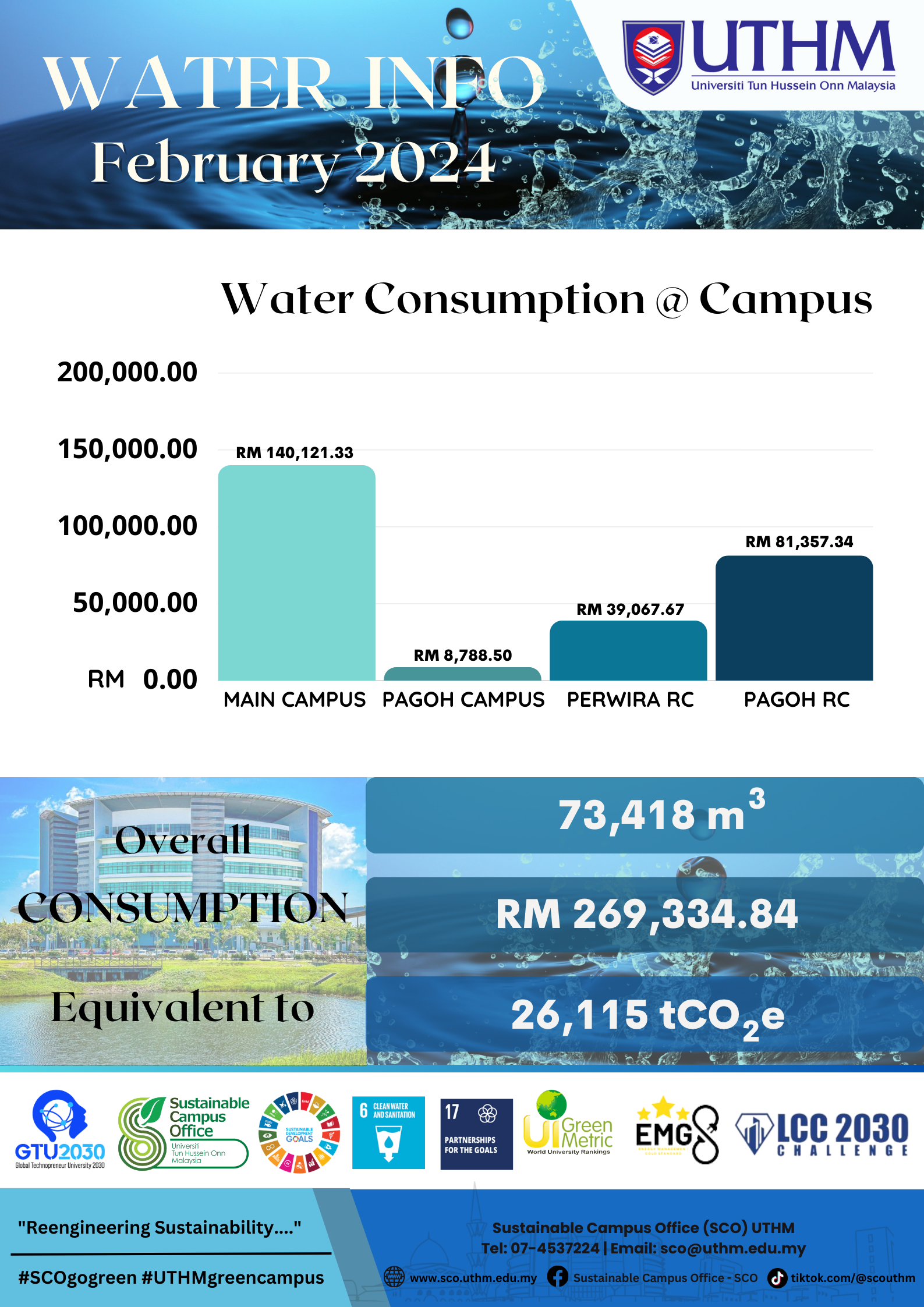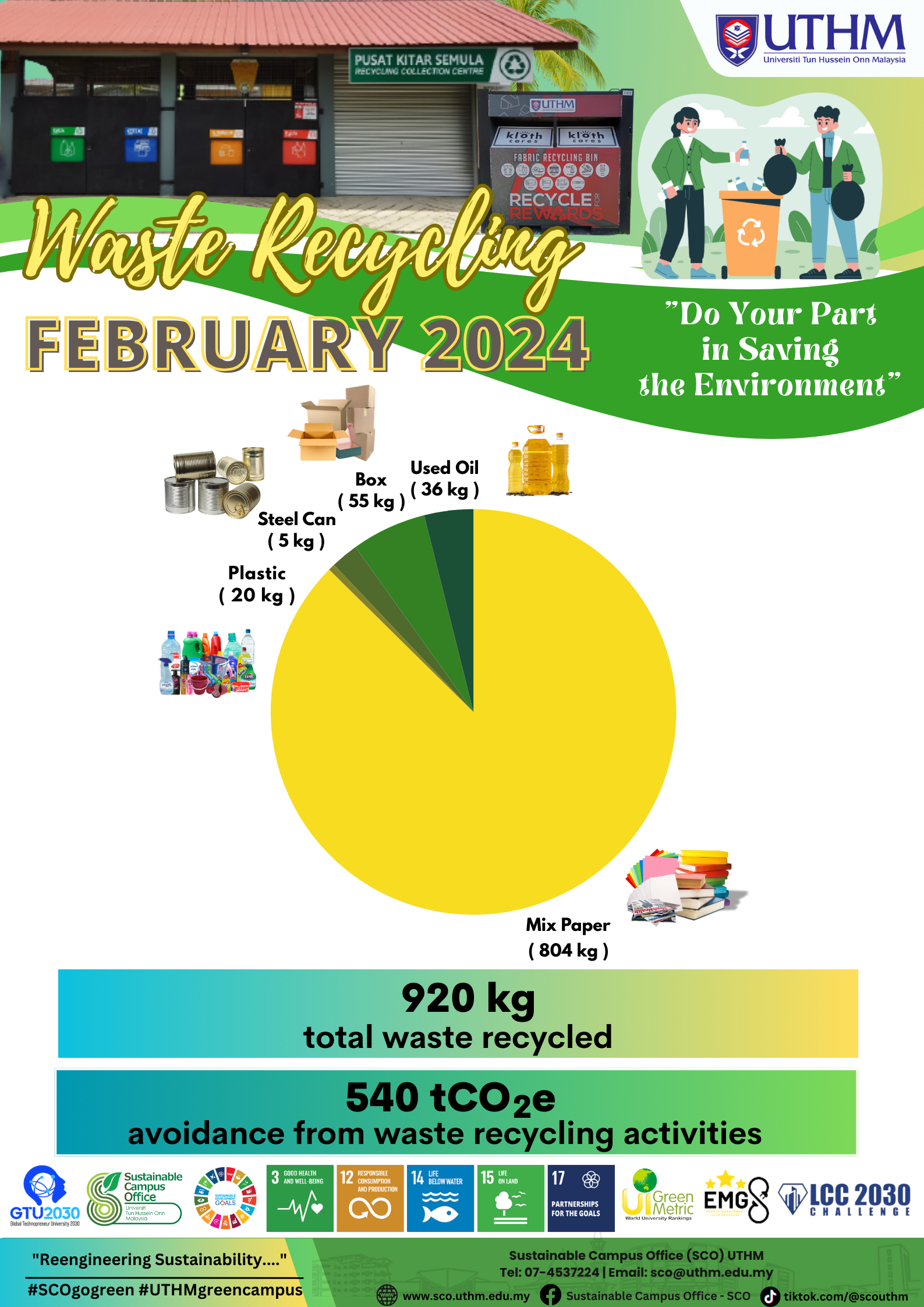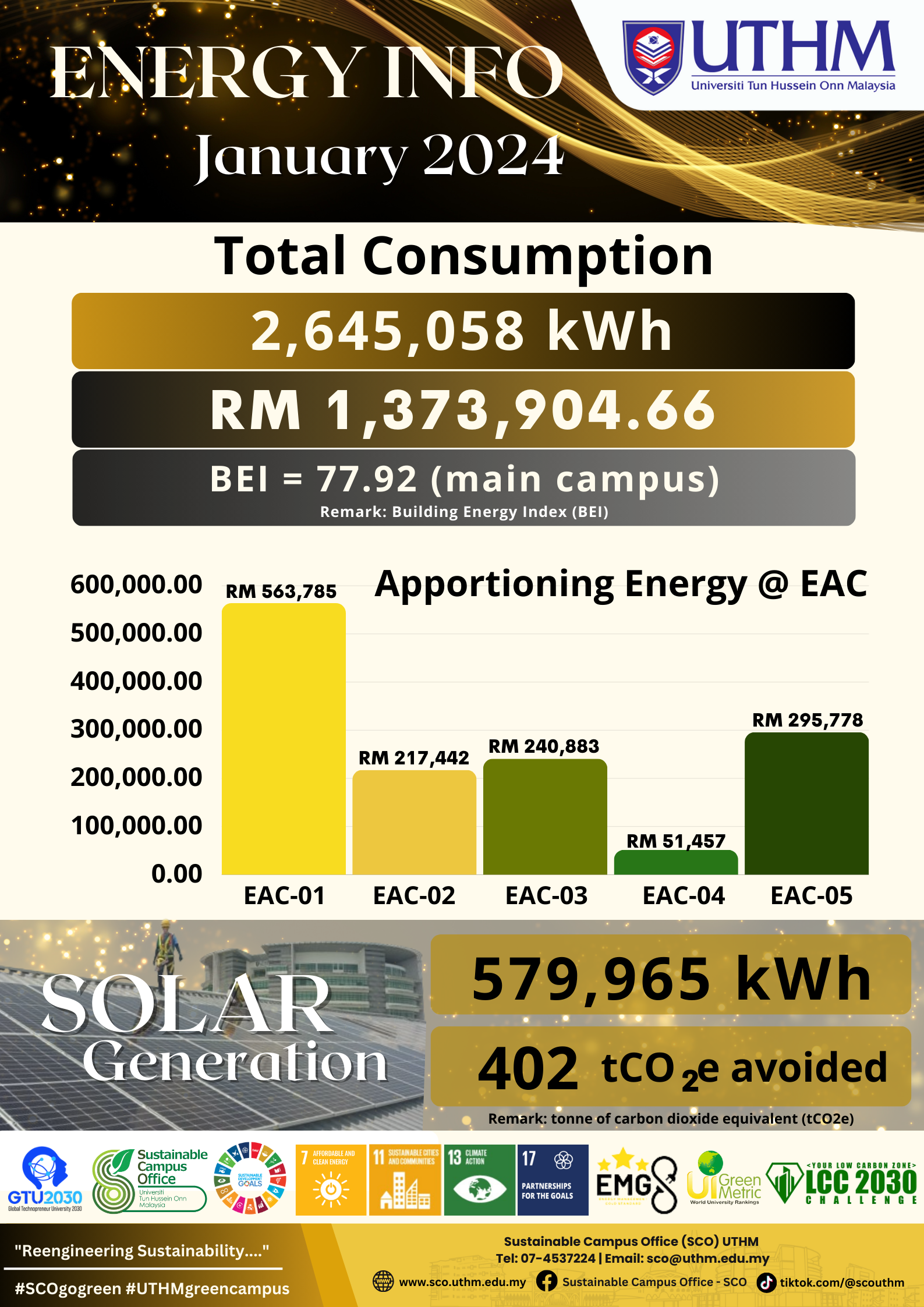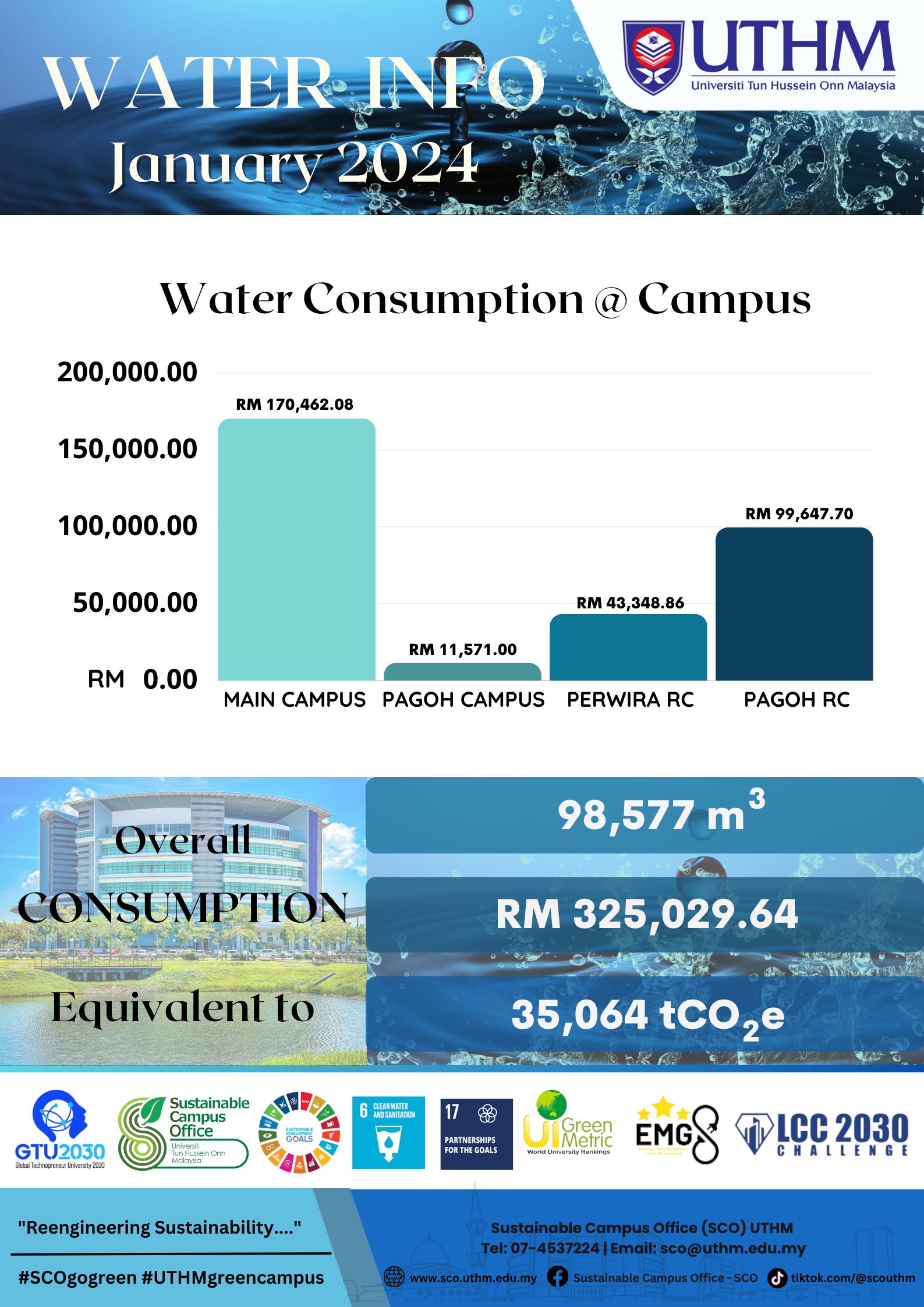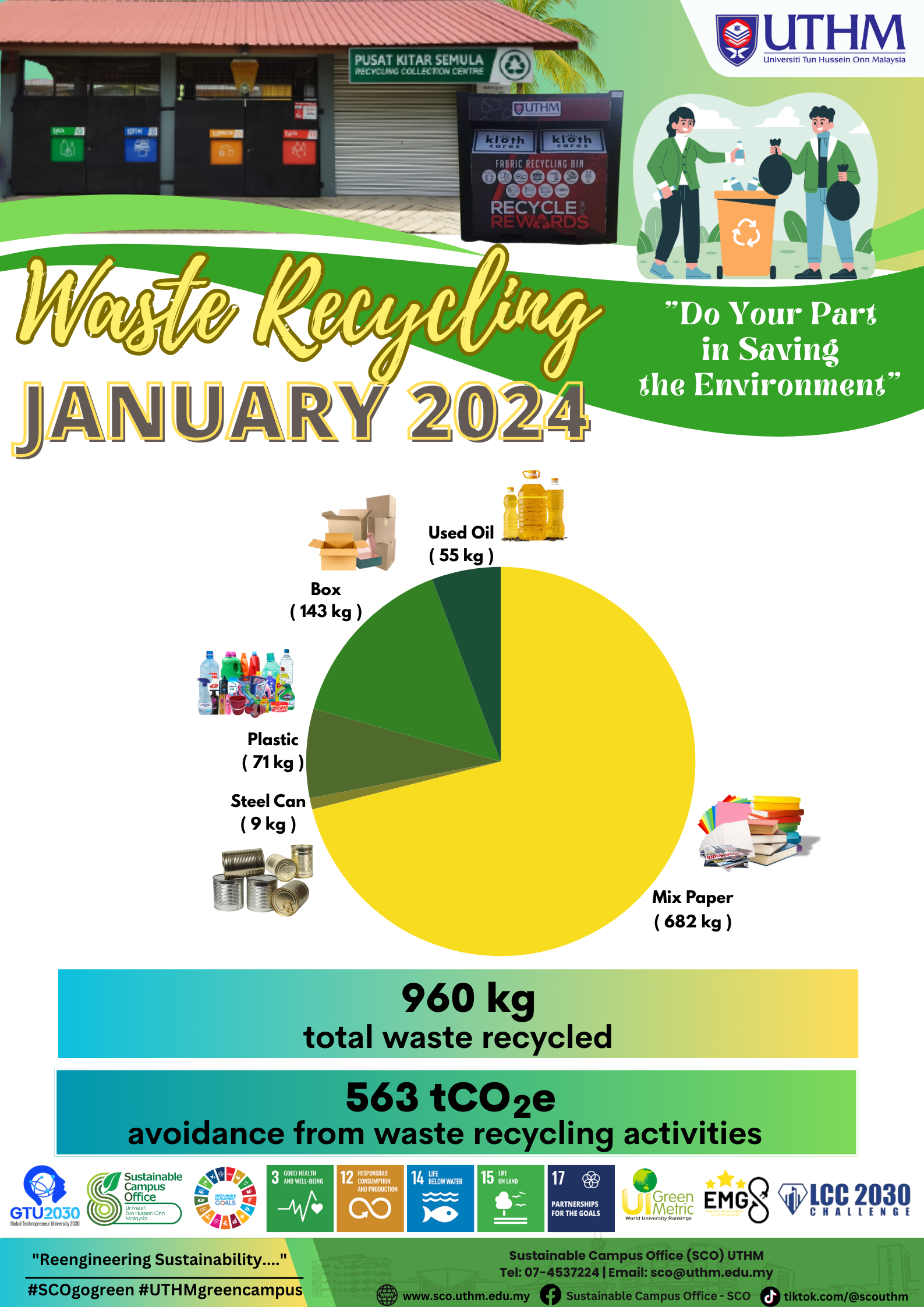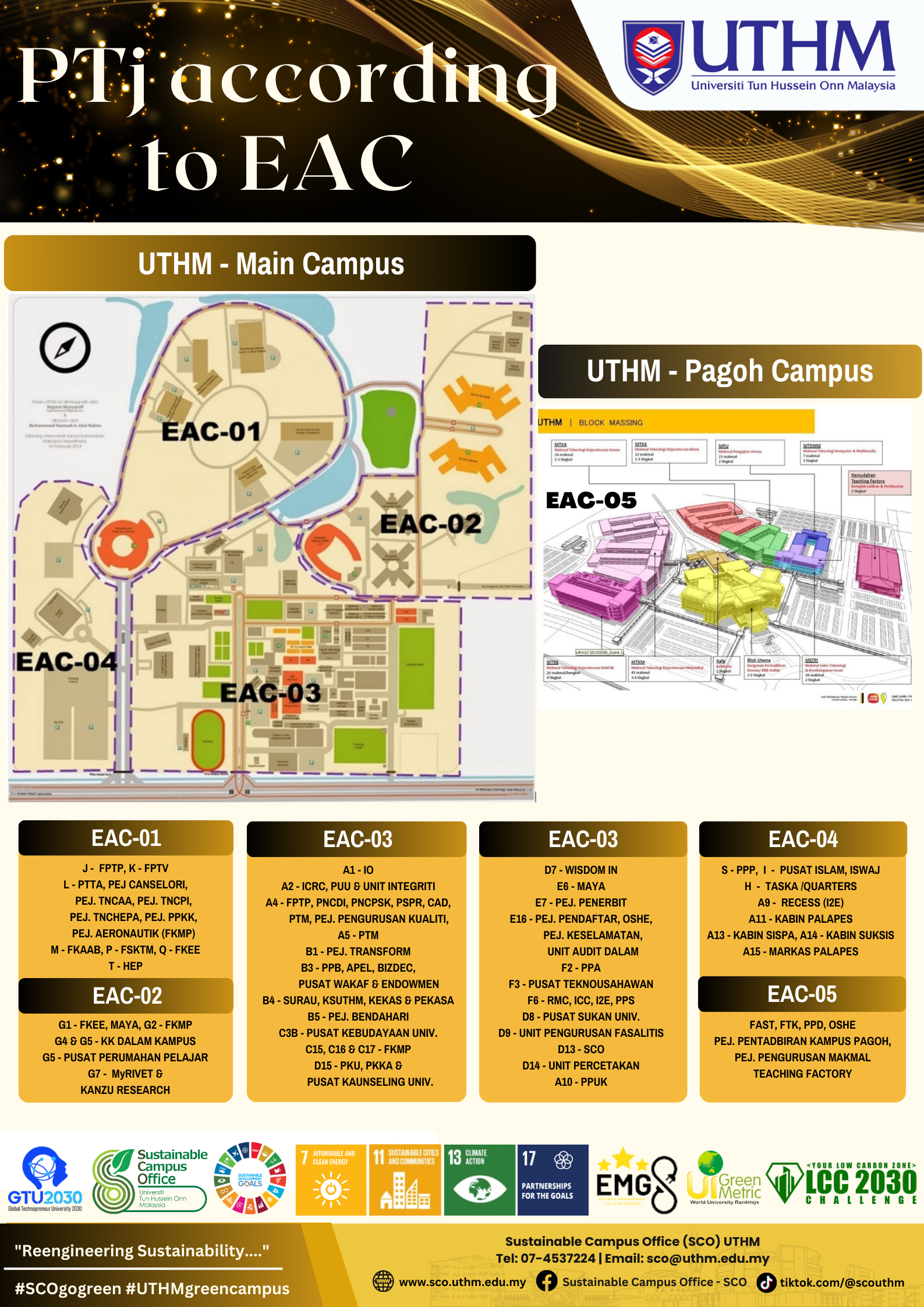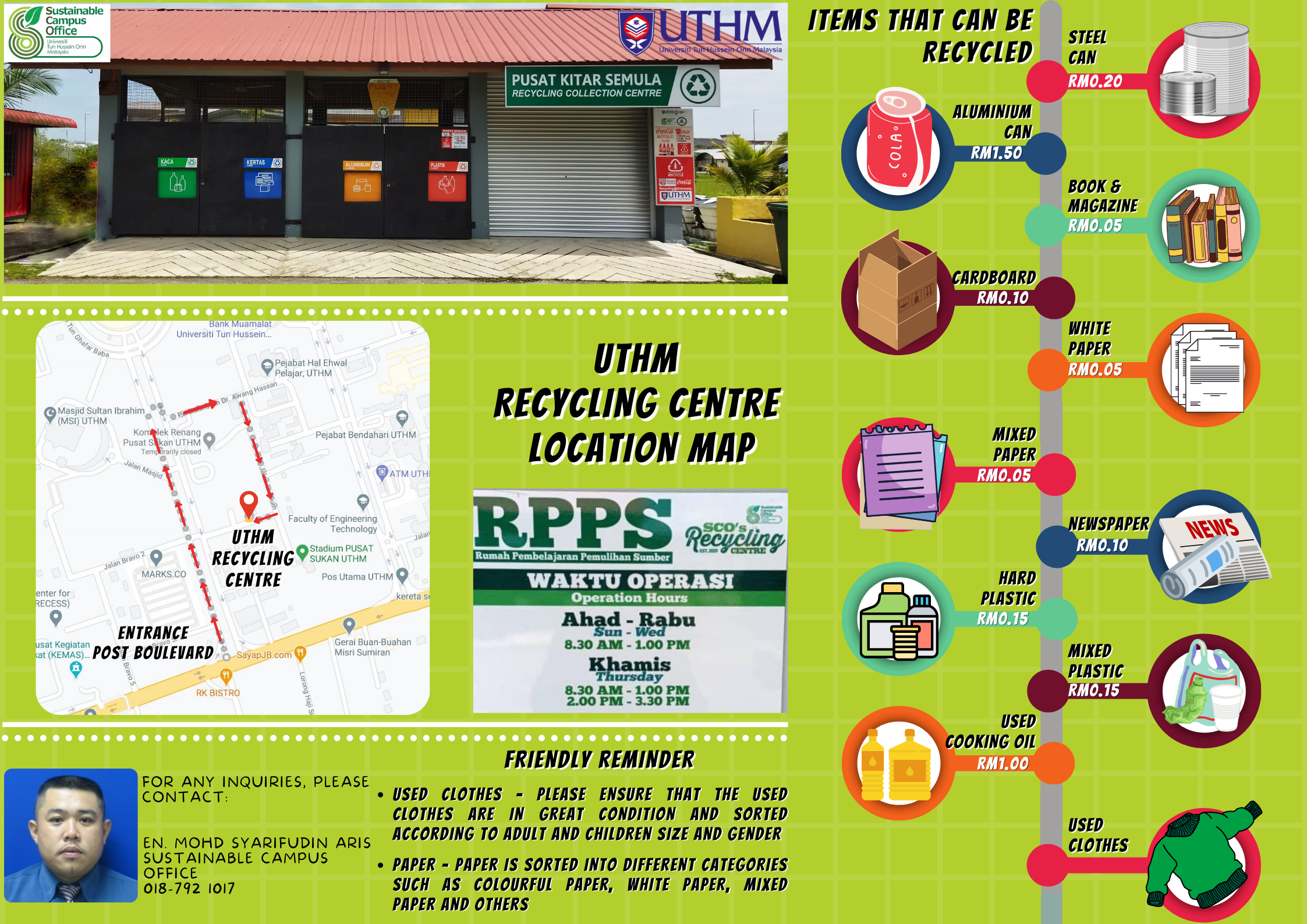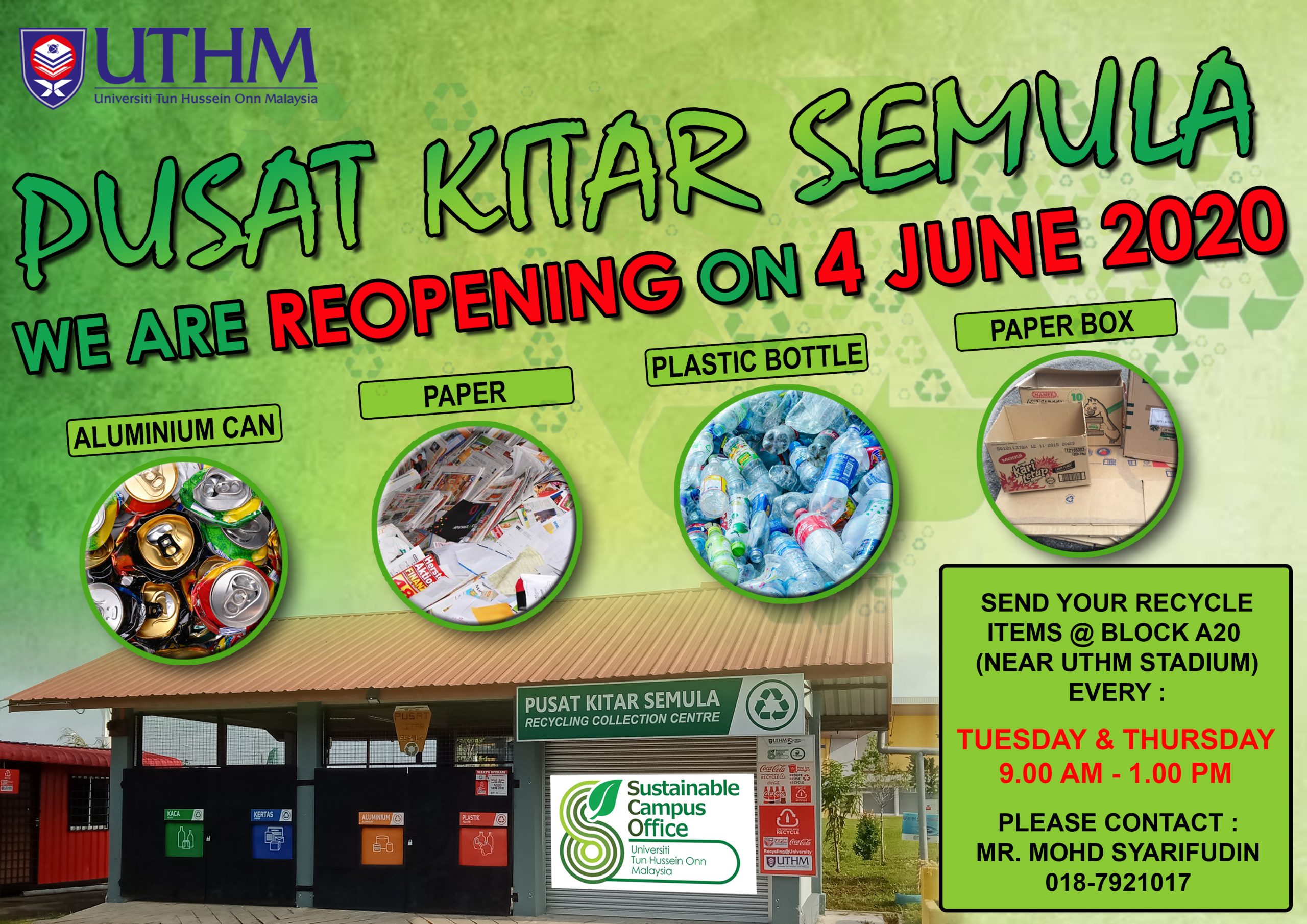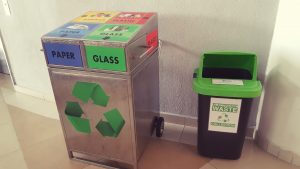2. Waste & Recycling
Introduction
In UTHM waste is considered as a resource and the complete life cycle of products. In 2012, the power generation capacity of solid waste in Malaysia has reached 33,000 tons per day. This rate surpassed the expectations that have been set out by the Japan International Cooperation Agency (JICA), which is 30,000 tons by 2020. This will lead to a limited capacity in landfill and the increasing cost of waste management. Therefore, Malaysia will face a risk of environmental pollution and increasing cost of solid waste management which will burden the country and the people (SWCorp, 2015). This unit is a role model for integrated waste management and will boost UTHM’s aspiration to be a green campus. UTHM can greatly improve its image by increasing the diversion rate of waste from the waste stream in main campus that will be disposed to the landfill.
Strategic Aim
- To systematically separate waste from resources and progress to zero waste through best practice in solid waste management
- To act in an environmentally responsible way and cultural change
- To be a role model for an environmentally friendly community
Objectives
- To promote awareness among UTHM community
- To practice Integrated Solid Waste Management System (ISWM) (prevention, minimization, reuse, recycling, energy recovery and disposal)
- To establish a proper waste management system
- To encourage the use of ‘recycled’ products
- To establish holistic energy and water management framework for UTHM.
Key Performance Indicators
- Waste generation according to waste composition in kg
- Recycled waste proportion %
Achievement & Reports
- SCO – to submit the report to SCO in every 6 months.
- Waste production report
- Awareness Campaign
